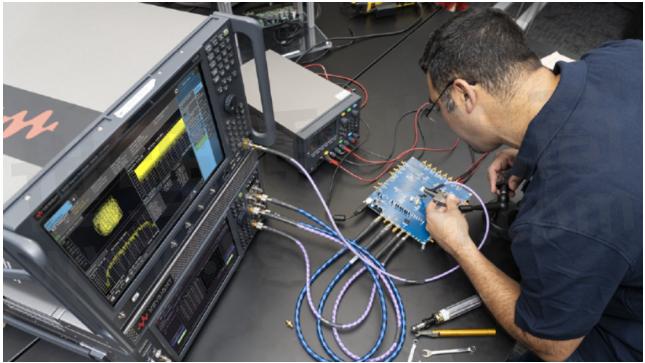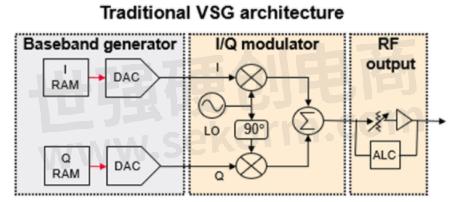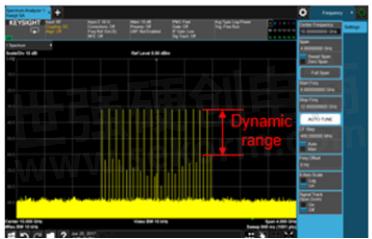Exploring Vector Signal Generators

Real-time waveform generation enables verification of receiver designs in all stages, from baseband subsystem coding all the way to sensitivity tests. When considering a vector signal generator of choice, there are various parameters to look at: switching modes for signal generation, creating your own waveforms, and exploring different testing scenarios. You should also consider the architecture differences, comparing traditional vs. DDS (direct digital synthesizer), as well as various other challenges that Vector Signal Generators can help solve.
Current Customer Challenges
Many RF engineers face new design and test challenges, including meeting ever-involving standard requirements, delivering performance, and accelerating time to market in today's competitive landscape. The demand growth for faster data rate applications triggers the need for new technologies capable of wider signal bandwidths and higher frequencies. Currently, the 5G New Radio (NR) standards specify frequency range 2 (FR2) from 24.25GHz to 52.6GHz and a maximum channel bandwidth of 400MHz.
Wider bandwidths enable high-throughput data and low latency. However, they also introduce more noise that degrades the system performance. Wireless engineers need to deal with the noise problem for wideband communications. Current wireless devices support multiple frequency bands and wireless formats and support for multiple antennas. These complex devices make the process of designing, testing, and isolating system problems more challenging. This leads to longer development lifecycle times, which slows down time-to-market.

Common Vector Signal Generator Architecture
The main feature that stands out in a traditional vector signal generator architecture is the inclusion of the I/Q modulator. The I (in-phase) and Q (quadrature) signals from a baseband generator's output travel to the I/Q modulator and upconvert with mixers to an intermediate frequency (IF) and RF signal. Before combining the I and Q signals, the I and Q signals mix with a same local oscillator (LO) and insert a 90-degree phase shifter in one of the LO paths.

Figure 1. A block diagram of a vector signal generator
Each component in the I/Q modulator contributes errors such as gain imbalance, timing skew, quadrature skew, DC offset, and phase noise (virtual: pop up these errors from the I/Q modulator). To visualize the modulator errors, we use the baseband generator to create a 16-multitone signal as an example. The output signal from traditional I/Q modulator generates nonlinear distortion that reduces the overall signal dynamic range. Figure 2 shows the intermodulation distortion between the 16 tones caused by the modulator and RF section. For a modulated signal, the distortion will degrade the signal quality and cause measurements failure. Therefore, to minimize the distortion for the signal generation is critical to accurately characterize wideband RF components and evaluate the receiver's performance.

Figure 2. A multitone signal with intermodulation distortion
Keysight explored some of the challenges that slow down your 5G testing. Taking into account traditional generator signal architecture, many of these challenges currently do not have adequate solutions. However, delving more into the future of vector signal generator architecture, learning how higher frequency coverage, wider bandwidths, and multi-channel applications can result in a breakthrough performance.
- +1 Like
- Add to Favorites
Recommend
- Simplify Complex RF Testing with Vector Signal Generators
- What Is the Difference Between Vector Signal Source and Radio Frequency Signal Source?
- Signal Generators: The Different Types and How They Work
- What Are the Common Misconceptions in Vector Signal Analysis?
- Keysight Launches Next-Generation Vector Signal Generator N5186A for Dense Wideband Multichannel Applications
- Keysight Technologies Delivers High Performance Vector Signal Generator for Wideband Multichannel mmWave Applications
- Precautions for Purchasing Signal Generators
- Keysight Technologies Acquires Quantum Benchmar, Augmenting Keysight‘s Quantum Portfolio
This document is provided by Sekorm Platform for VIP exclusive service. The copyright is owned by Sekorm. Without authorization, any medias, websites or individual are not allowed to reprint. When authorizing the reprint, the link of www.sekorm.com must be indicated.





























































































































































































































































































































































































































































































































































































































































































































































































































































































